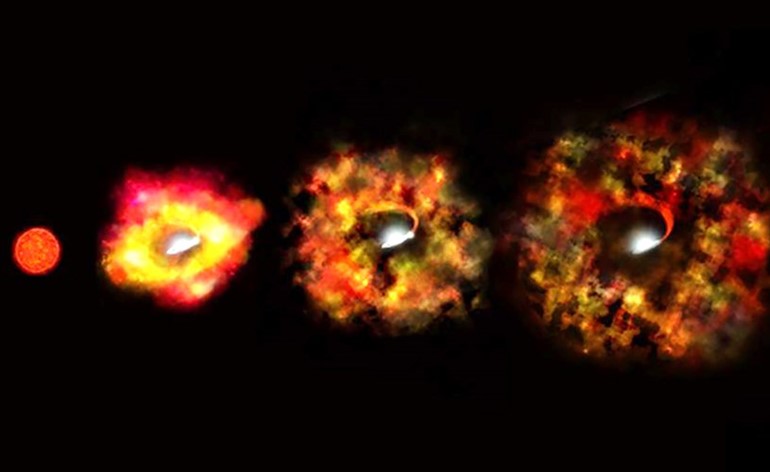08/10/2023
08/10/2023

KUWAIT CITY, Oct 8: In 2009, a colossal star, 25 times more massive than the Sun, seemingly vanished from the cosmos, presenting an enigma to scientists. However, recent research may shed light on this perplexing occurrence.
The star, named N6946-BH1 had baffled astronomers in 2009 when it displayed a surge in brightness akin to a supernova, intensifying to a brilliance exceeding a million suns. Contrary to expectations, the star dimmed afterward instead of undergoing a typical explosive supernova event, based on the technology available at that time.
Attempts to observe the star through various telescopes like the Large Binocular Telescope (LBT), Hubble, and the Spitzer Space Telescope proved futile, leaving scientists puzzled.
Yet, advancements in technology, specifically NASA's James Webb Space Telescope equipped with NIRCam and MIRI instruments, have now enabled scientists to analyze the existing data.
The James Webb Telescope facilitated the observation of N6946-BH1, situated in a galaxy 22 million light-years away. Recent infrared images captured by the telescope revealed a young star emitting colored gases at a velocity faster than sound.
A study published on September 28 on the arXiv website proposed a novel theory regarding this mysterious event, as reported by the news website Russia Today, citing the British newspaper The Sun. The research suggests that what initially appeared to be a bright star on the verge of a supernova in 2009 was, in fact, a star system shining brightly due to the merging of two stars. After this merger, the stars return to a state of normalcy, offering an explanation for their apparent "disappearance."


